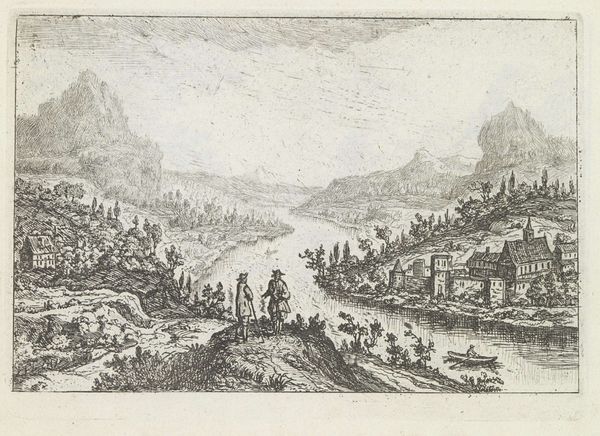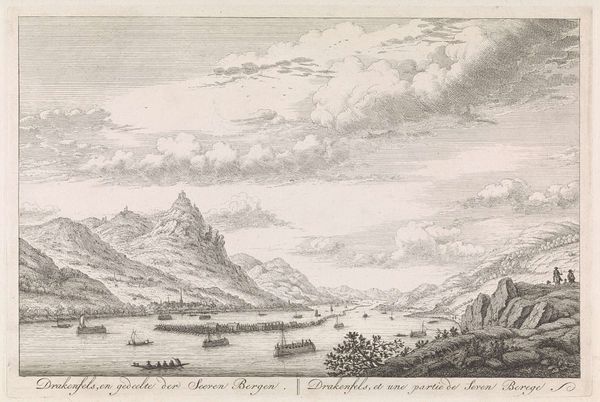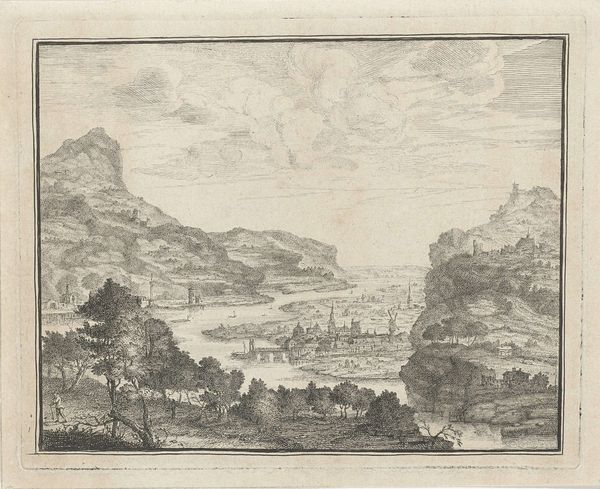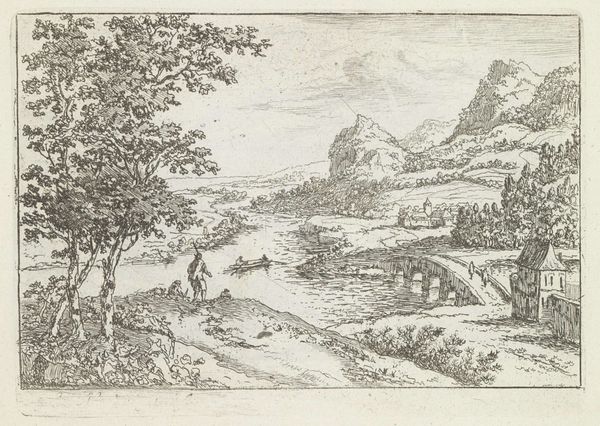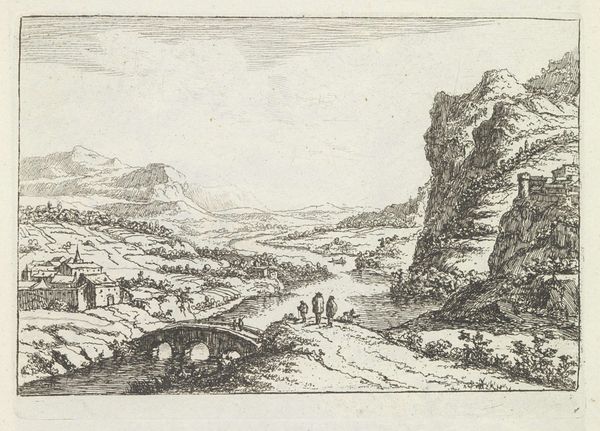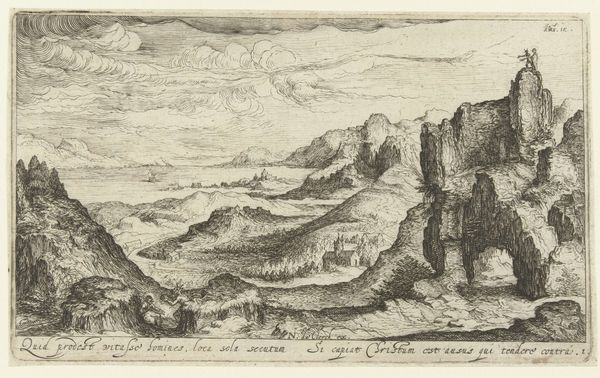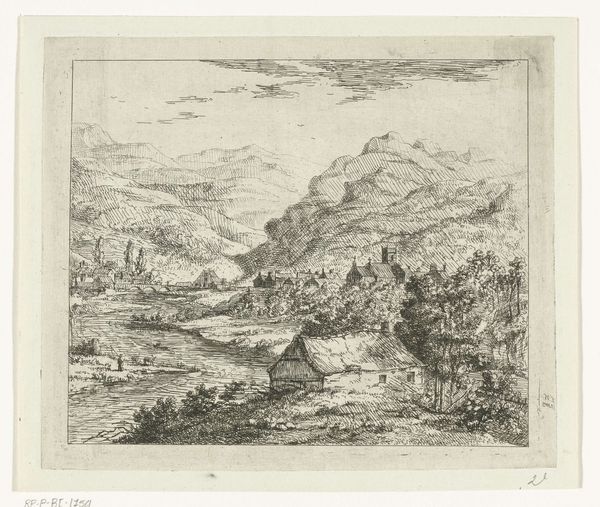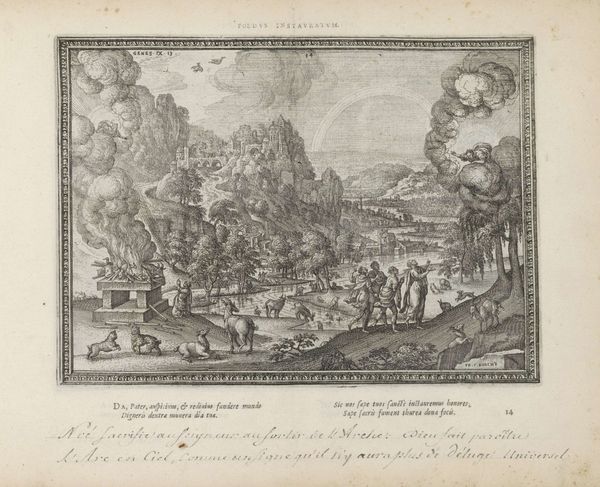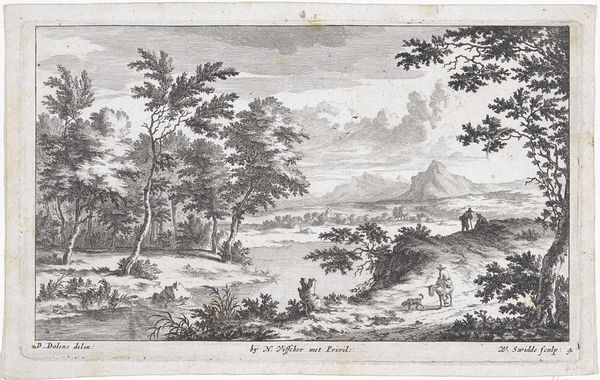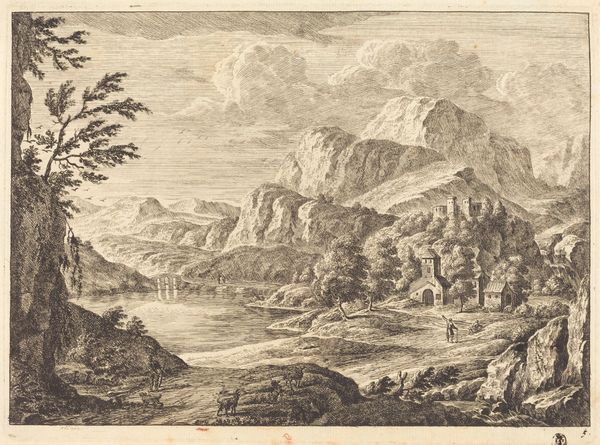
drawing, print, etching
#
drawing
#
dutch-golden-age
# print
#
etching
#
landscape
#
cityscape
Dimensions: height 110 mm, width 159 mm
Copyright: Rijks Museum: Open Domain
Curator: This etching, likely dating between 1662 and 1683, is titled "River Landscape with Two Men on a Hill," and it comes to us from the hand of Jan van Almeloveen. Editor: There's something inherently tranquil about it. The perspective, gazing out over the river... it’s very calming. But at the same time, it evokes a feeling of dominance, seeing the two figures surveying the scene below. Curator: Precisely. We must consider the period, the Dutch Golden Age. Landscape art wasn’t merely representational; it was often a celebration of Dutch power, commerce, and control over their lands and waterways. The two figures become emblematic of that dominion. Editor: Interesting. I wonder about their relationship, though. The way they are positioned, looking out over this vast scene… there is something suggestive about it, but I don’t think I’m convinced that it speaks to their dynamic as men during the Dutch Golden Age. Do you feel the scene conveys a feeling of camaraderie, a collaborative spirit perhaps indicative of burgeoning bourgeois society? Or a demonstration of individual status? Curator: The lack of any overt markers of status is suggestive. They aren't distinctly wealthy, their garments don't bear obvious hallmarks of the merchant class that defined that period. Instead, by including figures devoid of clear affiliation, does Almeloveen seek to place all men equally in their relationship to nature and God? We should consider it not only as an art piece but also within the social and political fabric that underpinned its existence. The relationship between humans, power and environment has been mediated through artistic representation in this manner throughout history. Editor: I can see the allure in seeking socio-political interpretations. For me, it also evokes that Romantic ideal, the sublime encounter with nature, although before the period we typically associate with Romanticism. The way Almeloveen plays with light and shadow also highlights the awe-inspiring features, those slightly imposing mountains. Curator: A worthwhile consideration! While it wasn’t yet the formal Romantic movement, pre-cursors absolutely existed. The piece resides in the Rijksmuseum collection, providing an immediate historical framework to analyse its relevance and the values it expresses through the way landscapes and subjects are depicted, and their importance during a crucial historical shift. Editor: Yes, contextualizing these subtle cues offers a much broader understanding of its place in art history, wouldn't you agree?
Comments
No comments
Be the first to comment and join the conversation on the ultimate creative platform.
